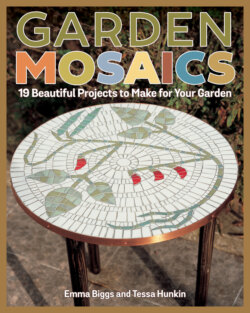Читать книгу Garden Mosaics - Emma Biggs - Страница 19
Marble cubes
ОглавлениеMarble tesserae can be cut to any size, although ⅝ in. (1.5 cm) cubes are easy to work with and therefore most often used. They are cut down from ⅜ in. (1 cm) thick polished marble tiles using a wet saw and have a polished face and a saw-cut face, either of which can be used. The polished face will have a high shine and a strong color with clear veins and markings. When used on floors, the grout joints between the small mosaic pieces will help to provide grip and prevent the surface from being too slippery. The unpolished face will be much less intense in color and may have slight diagonal markings from the saw blade. Tumbled cubes are also available, which have been passed through a tumbling machine to soften the edges and dull the polished face to create a muted effect, halfway between polished and unpolished. A similar effect is achieved by honing polished marble after it has been fixed. On large floors this is done with a machine, but small pieces can be rubbed down with wet and dry abrasive paper.
It is also possible to split the cubes, revealing a rough inner face with a crystalline surface. This is called riven marble and can be used on wall mosaics. The textured effect is very lively and can be combined with the sympathetically uneven surfaces of smalti.
Marble can be cut with tile nippers, and long-handled nippers give greater leverage. The hammer and hardie can also be used to cut saw-cut rods down into cubes and to split and shape them.
